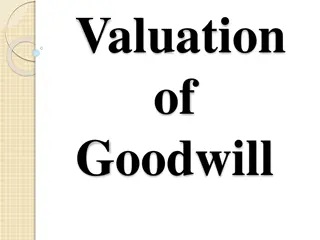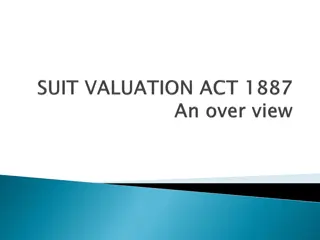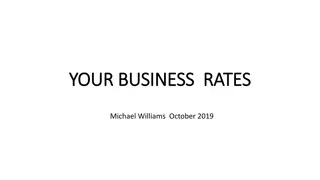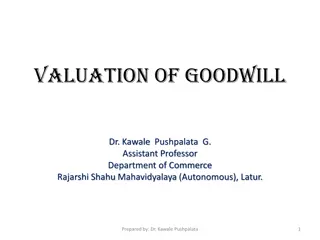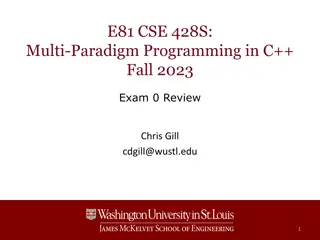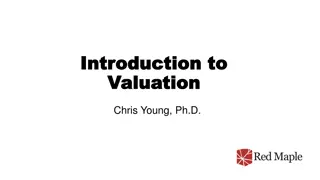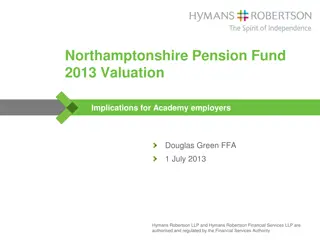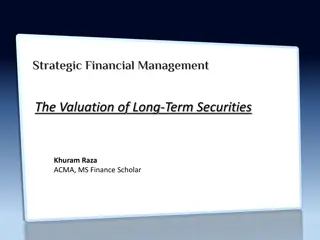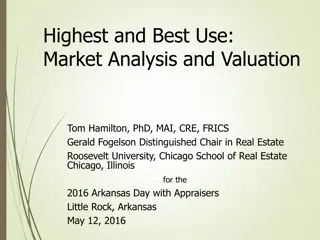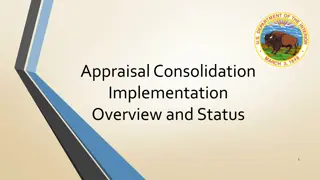Exam Preparation and Valuation Strategies for Business Success
Explore essential tips for exam preparation in the field of business valuation, including technical knowledge, theoretical concepts, and exam writing strategies. Learn about the differences between liquidation and adjusted net book value approaches to determine the viability of a business. Gain insights into maximizing marks by applying theory and case facts effectively.
Download Presentation

Please find below an Image/Link to download the presentation.
The content on the website is provided AS IS for your information and personal use only. It may not be sold, licensed, or shared on other websites without obtaining consent from the author.If you encounter any issues during the download, it is possible that the publisher has removed the file from their server.
You are allowed to download the files provided on this website for personal or commercial use, subject to the condition that they are used lawfully. All files are the property of their respective owners.
The content on the website is provided AS IS for your information and personal use only. It may not be sold, licensed, or shared on other websites without obtaining consent from the author.
E N D
Presentation Transcript
Level 2 Intermediate Business Valuation Fall/Winter 2015-2016 Conference Call #3 March 7, 2016
Agenda Important reminders Exam preparation tips Liquidation VS Adjusted NBV Question period
Important Reminders Exam date is March 22, 2016 Forum will be active until the exam if you have questions
Exam preparation tips Technical knowledge Make sure you are comfortable with the technical components of the course Need to be able to apply them to a valuation scenario Theoretical concepts For some issues, there is not always a clear right or wrong answer (ie: Discount/Premiums, Comparables, Ratios analysis) Prior year exams understand the theory instead of trying to reach the exact same answer You will be rewarded on the application of knowledge rather than memorization
Exam preparation tips Exam writing tips Plan carefully to avoid running out of time Be sure to discuss all aspects of the issue and conclude in order to maximize marks If there is no clear right or wrong answer, discuss both sides and conclude based on which side has a stronger argument Apply theory to case facts (theory alone is not enough)
Liquidation VS Adjusted NBV Before you get started, consider if the business is viable / will continue operating
Liquidation VS Adjusted NBV LIQUIDATION APPROACH The liquidation approach usually appropriate when a business is not viable as a going-concern Also consider if liquidation is orderly or immediate/forced (case by case basis) ADJUSTED NET BOOK VALUE Adjusted NBV approach is appropriate when there is no expectation of intangible value: Companies where value is closely related to underlying assets (ie:real estate) Operating businesses that do not generate sufficient return on net tangible assets, but going-concern value > liquidation value Operating business where all the income is attributable to personal goodwill (not transferable to a purchaser)
Calculating Liquidation Value REALIZABLE VALUE OF ASSETS COST OF DISPOSITION OPERATING PROFIT/LOSSES CORPORATE TAXES FUNDS AVAILABLE FOR DISTRIBUTION TAX ON DISTRIBUTION LIQUIDATION VALUE 8
Calculating Adjusted NBV SHAREHOLDER S EQUITY Adjustment of assets/liabilities to market value Income/loss for stub period PV of tax shield not available to purchaser Adjusted Net Book Value
Example From September 2015 exam Q4: Book value 150,000 300,000 440,000 5,000 850,000 150,000 1,895,000 FMV / Proceeds 150,000 150,000 220,000 Business income Investment income CDA Cash Accounts receivable Inventory Prepaids Fixed assets Goodwill Total Assets 0 - - - - - - - - (150,000) (220,000) (5,000) 25,000 Note 1 Note 2 Note 3 Note 4 - 1,100,000 200,000 200,000 - - - - 1,620,000 (350,000) 200,000 200,000 600,000 300,000 380,000 1,280,000 Operating line Accounts payable Long-term debt Total Liabilities (600,000) (150,000) (380,000) (1,130,000) Note 5 Net proceeds Less: business losses during liquidation period Less: professional fees for liquidation Less: tax on business income Less: tax on investment income Amount available for distribution Less: PUC Deemed dividend Less: CDA Balance Taxable dividend Less: taxes on distribution Net cash retained 490,000 (300,000) (20,000) Note 6 - - 170,000 1 Note 7 169,999 350,000 - - 170,000 FAIR MARKET VALUE USING LIQUIDATION APPROACH 170,000
Example From September 2015 exam Q4: Land Building Equipment FMV Cost Capital gain Total capital gain Taxable capital gain (50%) 200,000 150,000 50,000 200,000 100,000 800,000 650,000 150,000 100,000 400,000 0 (no capital loss on depreciable property) Lower of cost and FMV UCC Recapture/terminal loss Total 150,000 150,000 650,000 550,000 100,000 100,000 175,000 (75,000) 0 25,000
Example From September 2015 exam Q4: PART B - DETERMINE FMV UNDER ADJUSTED NET BOOK VALUE METHOD Shareholder's equity (December 31, 2015) 715,000 Note 1 Add: FMV adjustment for Building 700,000 Note 2 Add: FMV adjustment for Land 150,000 Note 2 Less: FMV adjustment for Equipment (100,000) Note 3 Less: FMV adjustment for AR and inventory - Note 4 Add: after-tax income/loss for stub period - Note 5 Less: adjustment for loss of tax shield (building) (15,879) Note 6 Adjusted net book value method 1,449,121 FMV USING ADJUSTED NET BOOK VALUE METHOD 1,449,121
Question period Ask about any technical issues you are having with the material



